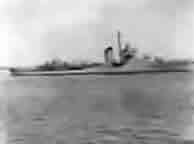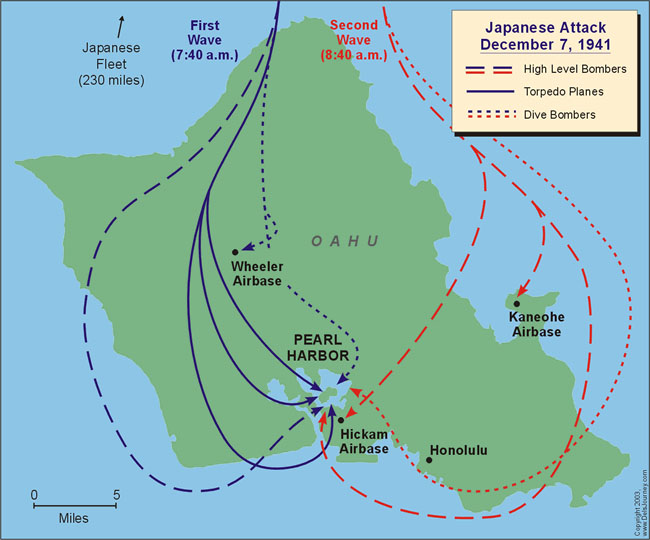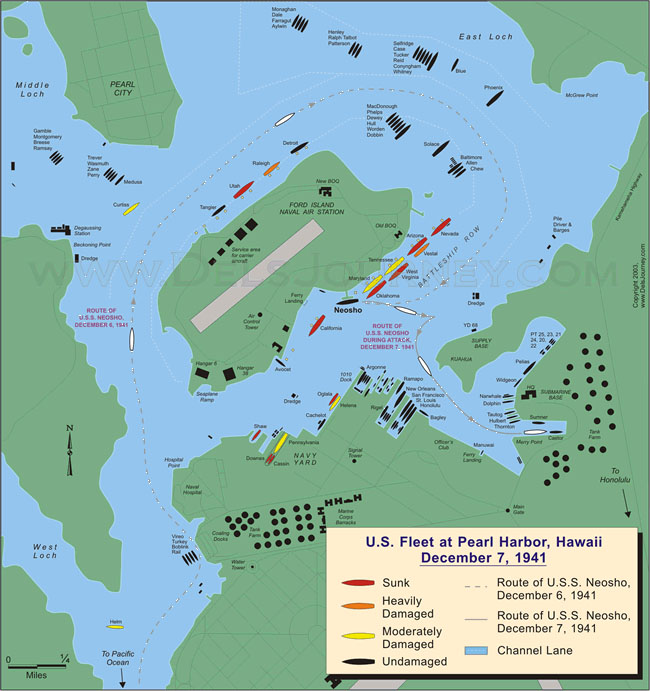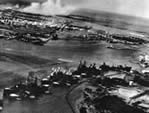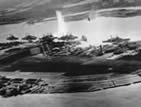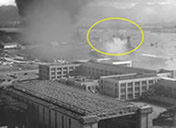The U.S.S. Neosho at Pearl Harbor |
In July of 1941, my uncle, Bill Leu, signed onto the new Navy oil tanker, the U.S.S. Neosho, in Bremerton, Washington. When it was launched in 1939, the 553-foot long Neosho was the largest oil tanker in the world. Bill, a 19-year old Fireman Third Class, worked down in the engine room in the "black gang," a moniker held over from the days of coal-fired ships.
Pacific Fleet in the spring of 1940. One of the most important tasks for the Navy at that time was to build up an adequate supply of diesel and aviation fuel at The U.S.S. Neosho, with a full load of fuel, arrived at Pearl Harbor on Saturday, December 6, 1941, its sixth round-trip since July. After entering the harbor, it docked at Hickam Air Field, where it pumped a half-million gallons of aviation fuel into the storage tanks there. Late that evening, the Neosho cast off and headed for the dock at Ford Island, passing the destroyers U.S.S. Henley and U.S.S. Helm, two ships that would figure prominently in the The Japanese Attack At 8:40 a.m., during a slight lull in the attack, Captain John S. Phillips, commander of the Neosho, ordered the ship to make way. No one was on the Ford Island dock to cast off, so Captain Phillips ordered to his crew, "Chop those lines!" As the Neosho backed away from the dock amidst a rain of bullets and bombs, she barely cleared the overturned Oklahoma, then headed for the relative safety of a berth at Merry Point on the Oahu mainland, pulling in behind the U.S.S. Castor at about 9:30 a.m.. From there, the Neosho's crewmen watched the second wave of Japanese planes swoop in and attack the smoking remnants of the fleet. Finally, around 10 a.m., the last Japanese planes left Pearl Harbor, flying back to their carriers north of Oahu, which had already turned around and were speeding back to Japan. Fortunately for Bill and the U.S.S. Neosho, a planned third wave of air attacks, which had targeted the valuable oil storage tanks around Merry Point, had been called off by the Japanese commander, Admiral Nagumo, who was content with the damage that had already been inflicted. In their wake, the Japanese planes had decimated the U.S. Pacific Fleet: 21 vessels, including seven of the fleet's great battleships, were sunk or badly damaged, 323 American planes were destroyed, and more than 3,000 Americans were dead or wounded. Aftermath The Neosho, now the only functioning U.S. Navy tanker in the mid-Pacific, spent the next several months criss-crossing the ocean while refueling ships and keeping the fleet going. Below: The Japanese attack plan at Pearl Harbor, Hawaii (December 7, 1941).
Below: A close-up of Battleship Row on the morning of December 7, 1941.
Above left: Ford Island, just before 8:00 a.m. on December 7, 1941, at the start of the Above center: Battleship Row at about 8:00 a.m. The U.S.S. Neosho (right) sits at the Above right: The U.S.S. Neosho (center) at about 8:30 a.m. An awning, erected for Sunday morning services, covers the bow of the U.S.S. California (left), which is listing and straining at its lines. The U.S.S. Oklahoma lies capsized behind the Neosho. This was just before
Above left: By 8:50 a.m., the U.S.S. Neosho (circled) was backing away from its berth and heading for Merry Point. It had narrowly missed hitting the overturned U.S.S. Oklahoma, which is clearly visible. Smoke is visible from several battleships. This photo was taken from the Above center: By about 9:10 a.m., the Neosho (circled) was still backing but was beginning to swing its bow around. Counter-flooding kept the U.S.S. California (left) from Above right: This photo, taken six weeks before the attack, shows where the U.S.S. Neosho tied up at Merry Point (circled) during the Pearl Harbor attack. It docked here behind the Information and photos obtained from: |
